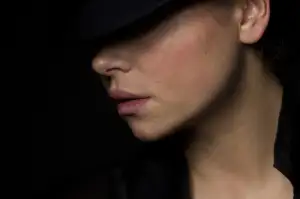Understanding Wide Set Breasts: Exploring the Health Implications and Body Diversity

Breasts come in all shapes and sizes, and one of the variations that exist is wide set breasts. Wide set breasts refer to a natural spacing between the breasts, where there is a noticeable gap between them. This characteristic is completely normal and occurs in many women.
Wide set breasts can be found in individuals of all body types and ethnicities. It is important to understand that there is no "ideal" or "normal" breast shape or size – every woman's body is unique and beautiful in its own way.
In this article, we will explore the anatomy of wide set breasts, the factors that influence their spacing, potential health implications, as well as provide tips for embracing and supporting wide set breasts. Let us celebrate the diversity in breast shapes and sizes, recognizing that beauty comes in many forms.
Understanding the anatomy of wide set breasts
Understanding the anatomy of wide set breasts is crucial in appreciating the diversity of the human body. Wide set breasts refer to breasts that are positioned further apart on the chest wall compared to the average breast placement. This variation in breast positioning is primarily determined by the distance between the mammary glands and the pectoral muscles.
The mammary glands, responsible for producing milk, are located within fatty tissue known as adipose tissue. In individuals with wide set breasts, this adipose tissue is distributed across a larger area, resulting in a wider gap between the breasts. Additionally, genetics play a significant role in determining breast shape and placement.
It's important to note that wide set breasts are not inherently abnormal or unhealthy. They are simply one of many natural variations in breast anatomy. Understanding this anatomy helps dispel any misconceptions or stigmas associated with wide set breasts.
By recognizing and appreciating different breast shapes and sizes, we can foster a more inclusive and body-positive society.
Factors influencing the spacing of breasts
Factors influencing the spacing of breasts can vary from person to person. One important factor is genetics, as breast shape and spacing are largely determined by an individual's unique genetic makeup. Hormonal changes during puberty and pregnancy can also affect breast development and spacing. Additionally, body weight and composition can play a role, as excess fat or muscle in the chest area may cause breasts to appear closer together or further apart. It's important to note that breast spacing is a natural variation and should be embraced as part of the beautiful diversity of the human body.
Potential health implications of wide set breasts
Potential health implications of wide set breasts can vary from person to person. One common concern is the risk of breast sagging due to the lack of natural support from closer-set breasts. However, it's important to note that breast sagging is a natural part of aging and can occur regardless of breast spacing. Another potential implication is difficulty finding well-fitting bras, as many standard sizes are designed for breasts that are closer together. This can lead to discomfort, improper support, and even skin irritation. It's crucial for individuals with wide set breasts to find bras specifically designed for their body type to ensure proper support and comfort. Additionally, some studies suggest that wider spacing between breasts may be associated with an increased risk of developing certain types of breast cancer. However, more research is needed in this area to establish a definitive link. It's important for individuals with wide set breasts to prioritize regular breast self-exams and screenings as recommended by healthcare professionals. Overall, while there may be certain considerations related to wide set breasts, it's essential not to pathologize or stigmatize this natural variation in breast shape and size.
Tips for embracing and supporting wide set breasts
1. Find the right bra: It's important to wear a bra that fits well and provides proper support. Look for bras with wider-set straps and cups that are designed to accommodate wider spacing between the breasts.
2. Opt for underwire bras: Underwire bras can help lift and shape wide set breasts, providing a more flattering appearance. Look for underwire bras that have a wider center gore to ensure proper separation and support.
3. Consider padded or push-up bras: Padded or push-up bras can help create the illusion of closer-set breasts if desired. These types of bras can enhance cleavage and provide a more symmetrical look.
4. Embrace your natural shape: Wide set breasts are a beautiful and unique feature of your body. Instead of trying to change or minimize their appearance, embrace them as part of your individuality and celebrate your body diversity.
5. Practice good posture: Maintaining good posture can help improve the overall appearance of wide set breasts by lifting them slightly higher on the chest. Stand tall, pull your shoulders back, and engage your core muscles to achieve better posture.
6. Seek professional advice: If you're struggling with finding the right bra or experiencing discomfort due to wide set breasts, consider seeking professional advice from a bra fitter or healthcare provider who specializes in breast health. They can provide personalized recommendations based on your specific needs.
Remember, every body is unique, and there is no one-size-fits-all approach when it comes to embracing and supporting wide set breasts. The most important thing is to love and accept yourself just as you are, celebrating the diversity in breast shapes and sizes that exists among women around the world.
Debunking common myths about wide set breasts
1. Myth: Wide set breasts are abnormal or unnatural.
Fact: Wide set breasts are a natural variation in breast shape and positioning. Just like any other body part, breasts come in different shapes and sizes, and wide set breasts are completely normal.
2. Myth: Wide set breasts indicate poor health or hormonal imbalance.
Fact: The spacing of breasts is primarily determined by genetics, not health or hormonal factors. Wide set breasts do not necessarily indicate any underlying health issues or hormonal imbalances.
3. Myth: Women with wide set breasts are less attractive or feminine.
Fact: Beauty standards vary across cultures and individuals. There is no single definition of attractiveness or femininity. Wide set breasts can be just as beautiful and feminine as any other breast shape.
4. Myth: Women with wide set breasts have difficulty breastfeeding.
Fact: Breastfeeding success depends on various factors such as milk supply, latch technique, and baby's ability to suckle, rather than the spacing of the breasts. With proper support and guidance, women with wide set breasts can successfully breastfeed their babies.
5. Myth: Wide set breasts cause back pain or discomfort.
Fact: Breast size, rather than breast spacing, is more likely to contribute to back pain or discomfort. Proper posture, supportive bras, and regular exercise can help alleviate any potential discomfort regardless of breast spacing.
It's important to debunk these myths surrounding wide set breasts and embrace the diversity in breast shapes and sizes. Every woman's body is unique, and celebrating this diversity promotes body positivity and self-acceptance for all individuals.
In conclusion, it is important to celebrate and embrace the diversity in breast shapes and sizes, including wide set breasts. Our bodies come in all different forms, and this includes variations in breast spacing. It is crucial to remember that there is no "ideal" or "normal" breast shape or size.
Wide set breasts are just one of the many natural variations that exist, and they should be embraced rather than stigmatized. Each individual's body is unique, and what matters most is maintaining overall breast health through regular self-examinations and screenings.
By understanding the anatomy of wide set breasts, appreciating the factors that influence their spacing, debunking common myths surrounding them, and offering support and acceptance, we can create a more inclusive environment for everyone.
Let us celebrate the beauty of diversity by embracing all types of breasts and promoting body positivity. Remember, our differences make us unique, special, and deserving of love and acceptance just as we are.
Published: 19. 02. 2024
Category: Health



